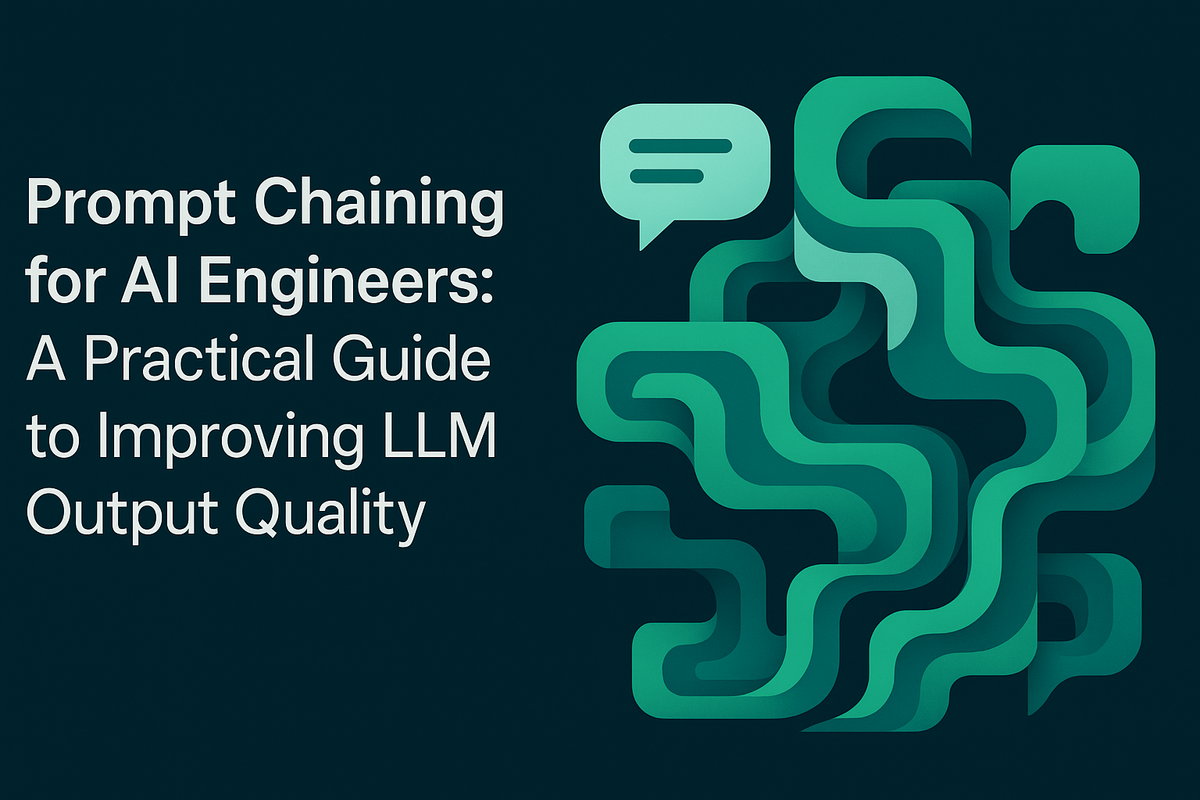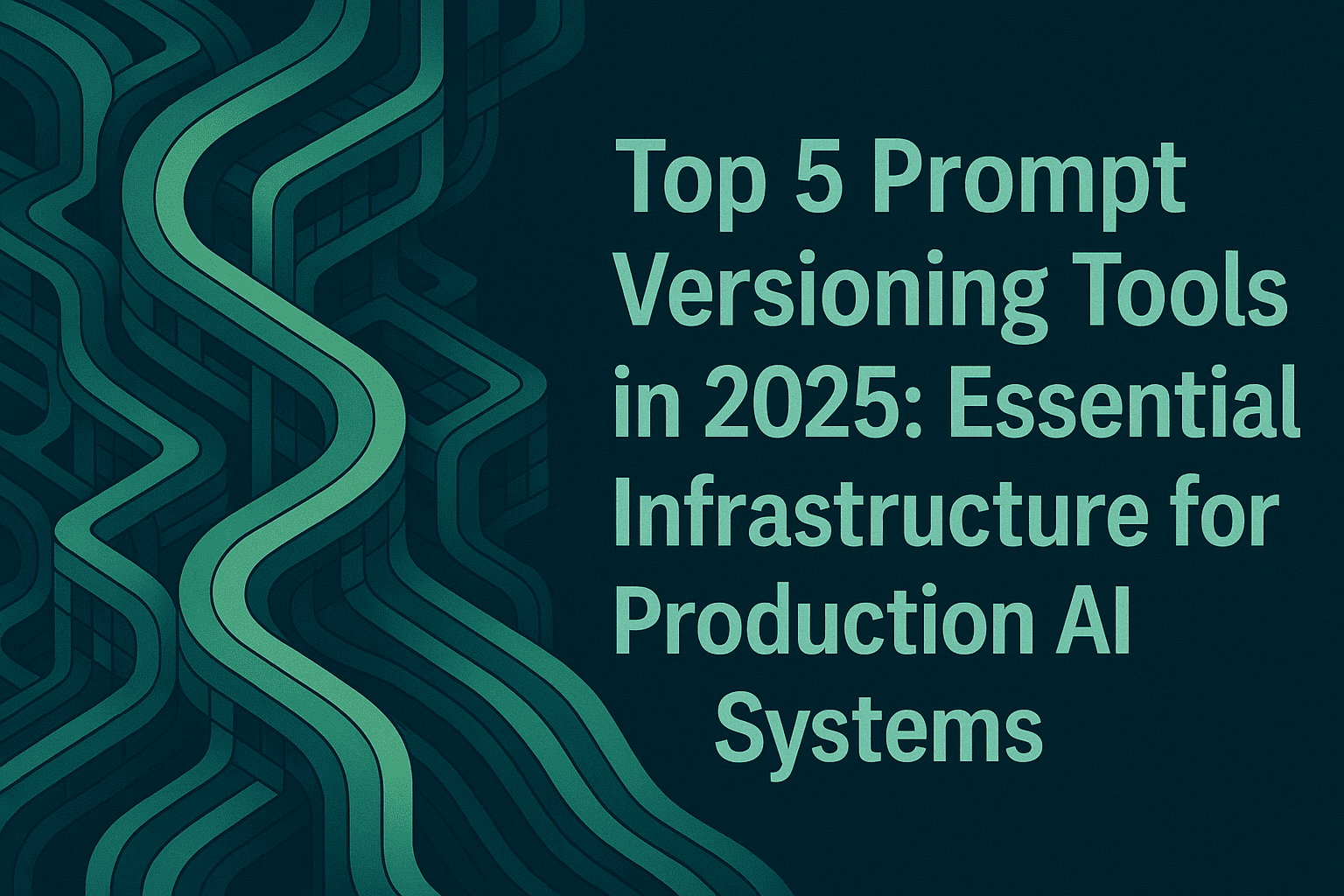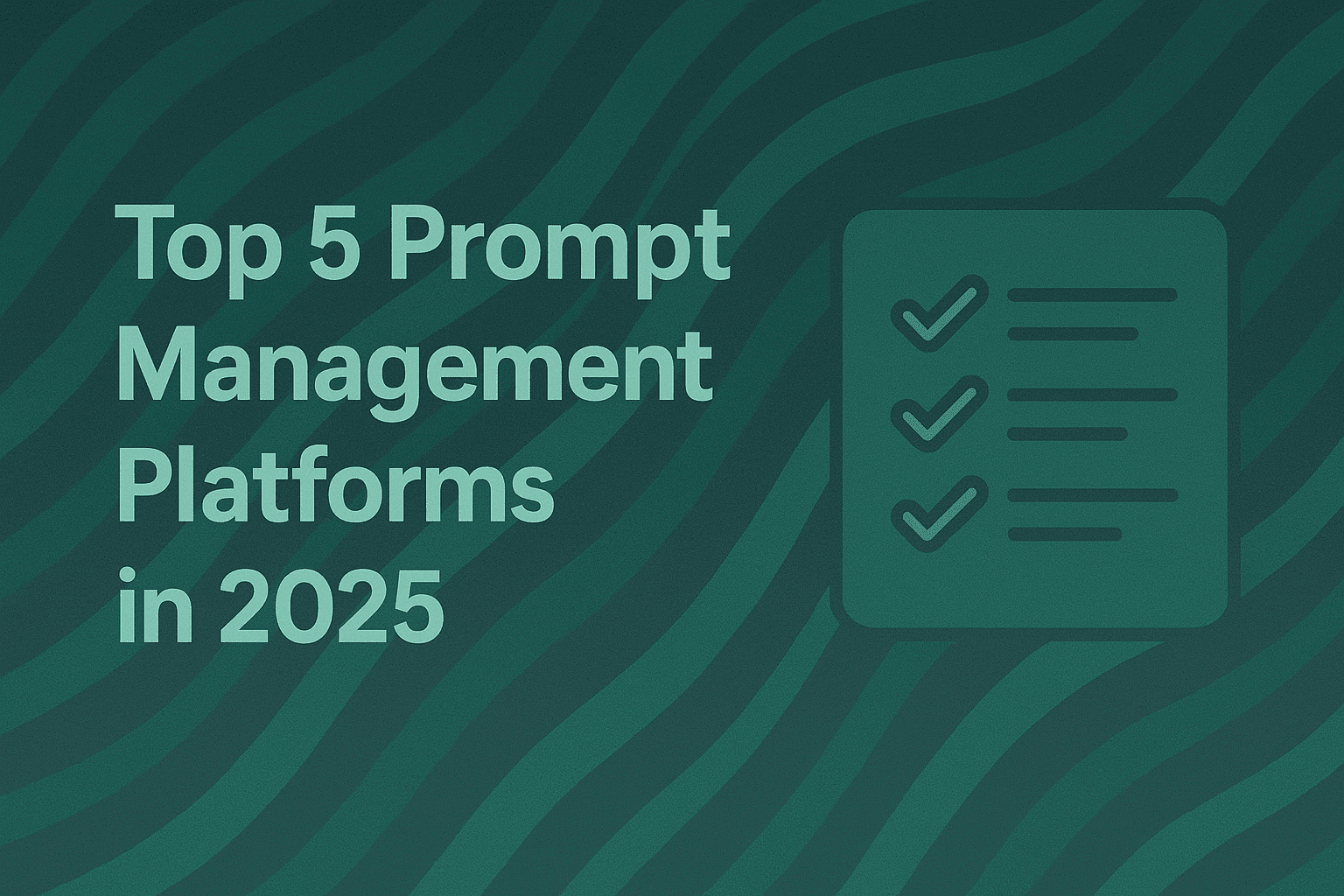Prompt Chaining for AI Engineers: A Practical Guide to Improving LLM Output Quality

Large language models face significant challenges when handling complex, multi-faceted tasks within a single prompt. Prompt chaining (a systematic approach that decomposes complex operations into sequential, focused subtasks) offers engineering teams a scalable pattern for improving reasoning quality, output reliability, and observability.
This guide defines prompt chaining, examines the research evidence supporting its effectiveness, provides implementation guidance for production systems, and demonstrates how Maxim AI's platform implements this technique across experimentation, evaluation, simulation, and observability workflows.
What Is Prompt Chaining?
Prompt chaining is a prompt engineering technique that splits complex tasks into discrete subtasks, each handled by a dedicated prompt with well-defined inputs and outputs. Rather than asking a model to "summarize this article with bullet points and include a call to action" in one prompt, a chained approach implements sequential steps:
- Generate initial summary
- Critique the draft summary
- Verify factual accuracy
- Produce refined final version
This technique shares conceptual foundations with related prompting strategies. Least-to-most prompting solves simpler subproblems before tackling more complex ones, while self-consistency samples multiple reasoning paths and selects the most consistent answer. Research demonstrates these decomposition approaches improve performance across mathematical reasoning, symbolic tasks, and compositional generalization challenges.
For a comprehensive overview of prompt chaining patterns and implementation strategies, see this guide to prompt chaining techniques.
The Research Evidence Behind Prompt Chaining
Three core mechanisms explain the quality improvements prompt chaining delivers in production systems:
Cognitive focus: Each subtask isolates a single objective, reducing the cognitive load on the model and making failures more localized and detectable. This isolation enables more precise debugging and quality measurement.
Iterative refinement: Sequential drafting, critique, and revision mirrors proven human workflows. Models respond effectively to structured feedback loops where earlier outputs become explicit inputs for downstream improvement.
Structured handoffs: Explicit output schemas between steps minimize context bleed and ambiguity. Clear data contracts between prompts make downstream reasoning more tractable and testable.
Empirical evidence supports these mechanisms across multiple research domains.
Self-Consistency and Reasoning Quality
Self-consistency improves chain-of-thought reasoning by sampling diverse reasoning paths and selecting the most consistent answer, achieving significant performance gains on mathematical benchmarks including GSM8K and SVAMP. The ICLR 2023 paper on self-consistency documents double-digit accuracy improvements through this approach.
Least-to-Most Prompting for Compositional Tasks
Least-to-most prompting demonstrates improved generalization on tasks harder than few-shot exemplars, including near-perfect compositional generalization on the SCAN benchmark when GPT-3 code-davinci-002 properly decomposes problems. Research published in Least-to-Most Prompting Enables Complex Reasoning in Large Language Models establishes this decomposition strategy as effective for compositional reasoning.
Direct Comparison: Chaining vs. Monolithic Prompts
Controlled experiments on text summarization show prompt chaining consistently outperforms monolithic stepwise prompts that attempt to combine drafting, critique, and refinement in a single instruction. The ACL 2024 Findings paper comparing prompt chaining to stepwise approaches provides empirical evidence for chaining's advantages in multi-stage generation tasks.
When to Implement Prompt Chaining
Prompt chaining proves particularly effective for specific use case patterns:
Multi-instruction tasks: When a single prompt combines multiple distinct operations such as extraction, transformation, analysis, and visualization, decomposition into explicit steps improves output quality and reliability.
Sequential transformations: Tasks requiring ordered data processing, parsing, normalization, scoring, and aggregation, benefit from explicit handoffs between steps with defined schemas.
Context management: When you observe frequent context loss, semantic drift, or "simulated refinement" behaviors where the model pretends to revise but actually regenerates, chaining with explicit intermediate outputs addresses these failure modes.
Observability requirements: Production systems requiring detailed agent tracing and span-level monitoring gain significant debugging advantages from chained architectures where each step can be evaluated and logged independently.
Prompt chaining delivers particular value for RAG evaluation, agent debugging workflows, and multi-step reasoning tasks where intermediate verification improves final output quality.
Implementation Guide for Production Systems
Design Subtasks and Data Contracts
Begin by decomposing your complex task into focused subtasks. Each subtask should have a single, clear objective.
Define precise output schemas for handoffs between steps. Use structured formats like JSON objects or strict text templates. Include relevant fields based on your requirements:
- Confidence scores for uncertain outputs
- Evidence snippets for factual claims
- Citation references for grounded responses
- Status codes for error handling
Minimize output size by passing only the information downstream prompts require. Excessive context in handoffs increases token costs and introduces potential noise.
Establish Evaluation Criteria
Attach evaluators at each step to measure quality and catch failures early:
Deterministic rules validate structural requirements such as schema compliance, required field presence, and output length constraints. These rules provide immediate, low-latency quality signals.
Statistical metrics like ROUGE and BLEU scores help monitor trends for generation quality, though they should supplement rather than replace task-specific evaluations.
LLM-as-a-judge evaluators scale well for subjective quality assessment but require validation. Research on instruction-controllable summarization shows that LLM-based evaluators can misalign with human judgment, particularly for specialized domains. Cross-check automated evaluations with human review for critical features. See Benchmarking Generation and Evaluation Capabilities of Large Language Models for detailed analysis of evaluator limitations.
Maxim's evaluation framework supports all three evaluator types with session, trace, and span-level granularity.
Run Systematic Experiments
Compare chained implementations against monolithic prompts using consistent test data:
Quality comparison: Measure task-specific metrics across both approaches using identical inputs and evaluation criteria.
Cost analysis: Track total token consumption across all steps. Chaining typically increases token usage but may improve success rates enough to justify the cost.
Latency measurement: Sequential steps add time. Measure end-to-end latency and identify opportunities for parallelization where dependencies allow.
Maxim's Playground++ enables systematic experimentation across prompt variants, model configurations, and parameter settings with unified tracking of quality, cost, and latency metrics.
Deploy with Gateway Infrastructure and Observability
Production deployment requires robust infrastructure and comprehensive monitoring:
AI gateway deployment: Use an AI gateway with automatic failover and semantic caching to maintain reliability while controlling costs. Gateway-level features like load balancing and provider fallbacks prevent single-provider outages from disrupting multi-step chains.
Distributed tracing: Implement span-level LLM tracing to debug step-wise failures. Trace each prompt invocation, log inputs and outputs, and measure quality metrics at every stage. This granular observability makes root cause analysis tractable for complex chains.
Operationalizing Prompt Chaining with Maxim AI
Maxim AI provides comprehensive platform support for teams implementing prompt chaining across development and production environments.
Experimentation: Rapid Iteration on Prompt Variants
Playground++ accelerates prompt engineering workflows with capabilities designed for chained architectures:
Prompt versioning and management: Organize prompts hierarchically, version each step independently, and track changes over time. Deploy prompt variants with different parameters without code changes.
Multi-model comparison: Test chain implementations across providers and model families. Compare output quality, cost, and latency in side-by-side evaluations to identify optimal configurations.
RAG pipeline integration: Connect prompt chains directly to retrieval systems. Test how different retrieval strategies and grounding approaches affect downstream generation quality.
This environment enables systematic A/B testing between chained and monolithic approaches while maintaining detailed records of experimental results for AI evaluation and decision-making.
Simulation: Testing Chains Under Realistic Conditions
Agent simulation validates prompt chain behavior across diverse scenarios before production deployment:
Multi-turn conversation testing: Simulate complete user interactions across personas and scenarios. Observe how chains handle context accumulation, error recovery, and edge cases throughout extended conversations.
Trajectory analysis: Assess whether chains complete tasks successfully, identify points of failure, and measure quality degradation across steps. Step-by-step visibility enables precise diagnosis of where chains break down.
Reproducibility: Re-run simulations from any step to isolate issues and validate fixes. This capability proves critical for debugging complex chains where failures occur deep in the sequence.
Chaining transforms opaque end-to-end systems into observable pipelines where each stage can be measured, debugged, and improved independently, significantly enhancing agent monitoring capabilities.
Evaluation: Comprehensive Quality Assessment
Maxim's evaluation framework provides flexible, multi-level quality measurement:
Configurable evaluators: Deploy deterministic rules, statistical metrics, and LLM-as-a-judge evaluators at session, trace, or span level. This granularity enables quality measurement for individual chain steps as well as end-to-end outputs.
Human-in-the-loop review: Integrate expert review for high-stakes domains where automated evaluators prove insufficient. Collect human feedback efficiently and use it to refine both prompts and automated evaluation criteria.
Regression testing: Visualize evaluation runs across large test suites and multiple prompt versions. Quantify improvements or regressions before production release, ensuring changes deliver genuine quality gains.
This comprehensive evaluation approach supports robust measurement of hallucination detection, faithfulness, and formatting compliance across each subtask in a chain.
Observability: Production Monitoring and Debugging
Agent observability capabilities enable continuous quality monitoring for deployed chains:
Distributed tracing: Monitor production traffic with session, trace, and span-level logging. Track which steps in chains show quality degradation, latency spikes, or elevated failure rates.
Custom dashboards: Build views that slice metrics by chain step, user persona, model version, or business dimension. This visibility supports data-driven optimization of multi-step workflows.
Automated quality checks: Run periodic evaluations on production traffic. Set alert thresholds for key quality metrics and route incidents for rapid mitigation before user impact escalates.
Data curation: Export production logs to evaluation datasets. Convert live failures into regression tests, ensuring your evaluation suite evolves with real-world usage patterns.
Production observability transforms prompt chains from black boxes into measurable, optimizable systems with clear quality signals at every stage.
Data Engine: Continuous Quality Improvement
The Data Engine closes the feedback loop between production and evaluation:
Multi-modal dataset curation: Import, enrich, and evolve datasets from production logs. Support text, voice, and visual modalities across evaluation workflows.
Targeted test splits: Create evaluation subsets for specific personas, edge cases, or failure modes. Ensure comprehensive coverage across the distribution of real-world usage.
Human feedback integration: Collect expert annotations and user feedback. Use this ground truth to refine automated evaluators and validate quality improvements.
Continuous data curation ensures evaluation suites remain representative and challenging as your system evolves.
Example Use Cases
Data Processing Pipelines
Implement chains that progress from raw input to actionable output:
Extraction → Cleaning → Normalization → Analysis → Visualization
Attach schema compliance evaluators at each step. Monitor for outliers in cleaning, validate normalization against business rules, verify analysis correctness, and check visualization formatting. This pattern proves effective for structured data transformation workflows.
Retrieval-Augmented Generation
Decompose RAG systems into explicit stages:
Retrieval → Evidence Selection → Grounding → Synthesis → Verification
Add evaluators for RAG evaluation focusing on faithfulness and citation coverage. Use LLM tracing spans to track which document chunks influence final answers. This visibility enables systematic RAG optimization.
Voice Agent Workflows
Structure voice interactions as sequential processing stages:
Transcription → Intent Classification → Slot Filling → Policy Application → Response Generation
Include span-level audio metadata, error codes, and latency measurements for voice agent monitoring. This granular observability supports debugging acoustic issues, classification errors, and generation quality problems independently.
Considerations for Specialized Domains
For controlled summarization tasks, research shows that large language models can still produce factual errors even with explicit instructions, and LLM-based evaluators may misalign with human judgment. The InstruSum benchmark and dataset demonstrate these challenges. Build human review into workflows for high-stakes applications in clinical, legal, and financial domains.
Measuring Success: Metrics for Prompt Chains
Implement a comprehensive measurement stack for LLM evaluation:
Structural Metrics
Monitor basic correctness across chain steps:
- Schema validity for structured outputs
- Required field presence
- Token length adherence to constraints
- Format compliance for downstream consumers
Quality Metrics
Track task-specific performance indicators:
- Factuality scores using rule-based validators
- Human evaluation results from spot-checks
- Consistency measurements across multiple chain runs
- Downstream task success rates
Operational Metrics
Measure system performance and reliability:
- Average tokens per step and total chain cost
- Cache hit rates for repeated operations
- Failure and retry counts by step
- Provider failover frequency
Reliability Metrics
Track system resilience:
- Step-wise pass rates across the chain
- Fallback activations during degraded conditions
- Quality degradation patterns across providers
Use Maxim's custom dashboards to analyze metrics by chain step, user persona, model version, and business dimension. Embed human-in-the-loop evaluation for last-mile quality checks where automated evaluators show documented limitations.
Trade-Offs and Practical Considerations
Prompt chaining involves engineering trade-offs that require careful evaluation:
System Complexity
Multiple steps and handoffs increase surface area for potential failures. Each additional prompt introduces new opportunities for errors, schema mismatches, and unexpected behaviors.
Mitigation: Strong agent tracing and comprehensive logging make issues local and diagnosable. Invest in observability infrastructure to offset complexity costs.
Token Cost
Sequential prompts increase total token consumption, particularly when steps generate verbose intermediate outputs or reasoning traces.
Mitigation: Semantic caching reduces repeated work. Design concise output schemas that pass only necessary information to downstream steps.
Latency
Sequential execution adds time compared to single-prompt approaches. Each step introduces network round-trips and model inference latency.
Mitigation: Parallelize independent steps where possible. Use automatic fallbacks to avoid stalls on degraded providers. Select faster models for non-critical steps while reserving more capable models for complex reasoning stages.
When Chaining May Not Help
Single-prompt approaches sometimes suffice:
- Simple tasks with minimal complexity
- Real-time applications with strict latency budgets
- Use cases where decomposition provides no clear benefit
Despite these trade-offs, empirical evidence consistently shows prompt chaining produces better, more controllable outputs for complex tasks. The ACL 2024 Findings comparison demonstrates that chained refinement outperforms stepwise refinement in a single prompt for summarization tasks. See the research on prompt chaining versus stepwise approaches for detailed experimental results.
Conclusion
Prompt chaining provides engineering teams with a pragmatic approach to improving LLM system reliability, measurability, and scalability. The technique aligns naturally with software engineering best practices: clear component responsibilities, typed interfaces between stages, and iterative refinement based on feedback.
Research evidence across reasoning benchmarks and generation tasks supports chaining's effectiveness. When combined with Maxim AI's comprehensive platform for experimentation, simulation, evaluation, and observability, plus Bifrost's AI gateway infrastructure for multi-provider access and reliability, teams can implement robust prompt chains and deploy higher-quality AI agents with confidence.
Ready to implement prompt chaining in your AI systems? Book a demo to see how Maxim supports end-to-end prompt engineering workflows, or sign up now to start building more reliable AI applications today.
References
- Wang, X., et al. (2023). Self-Consistency Improves Chain of Thought Reasoning in Language Models. ICLR 2023.
- Zhou, D., et al. (2023). Least-to-Most Prompting Enables Complex Reasoning in Large Language Models. ICLR 2023.
- Wu, Z., et al. (2024). Prompt Chaining or Stepwise Prompt? Refinement in Text Summarization. ACL 2024 Findings.
- Wang, Y., et al. (2024). Benchmarking Generation and Evaluation Capabilities of Large Language Models for Instruction Controllable Summarization. arXiv preprint.
- Salesforce. (2024). InstruSum: Instruction Controllable Summarization Dataset. Hugging Face.


